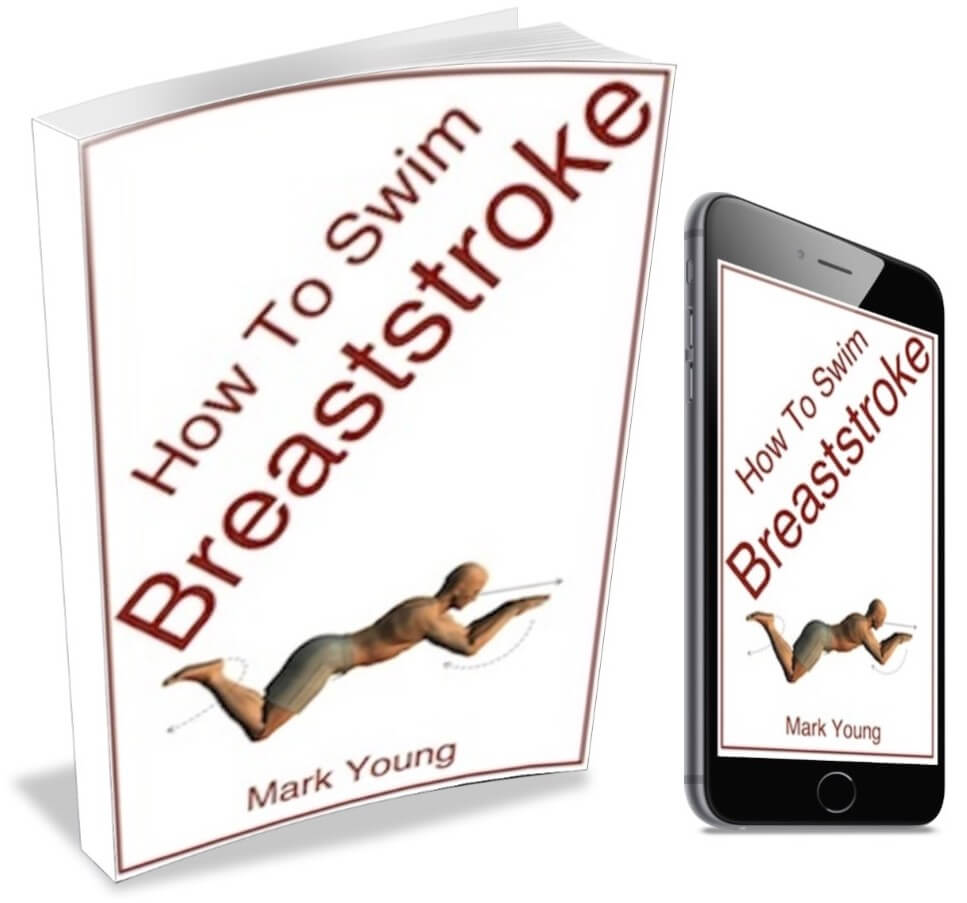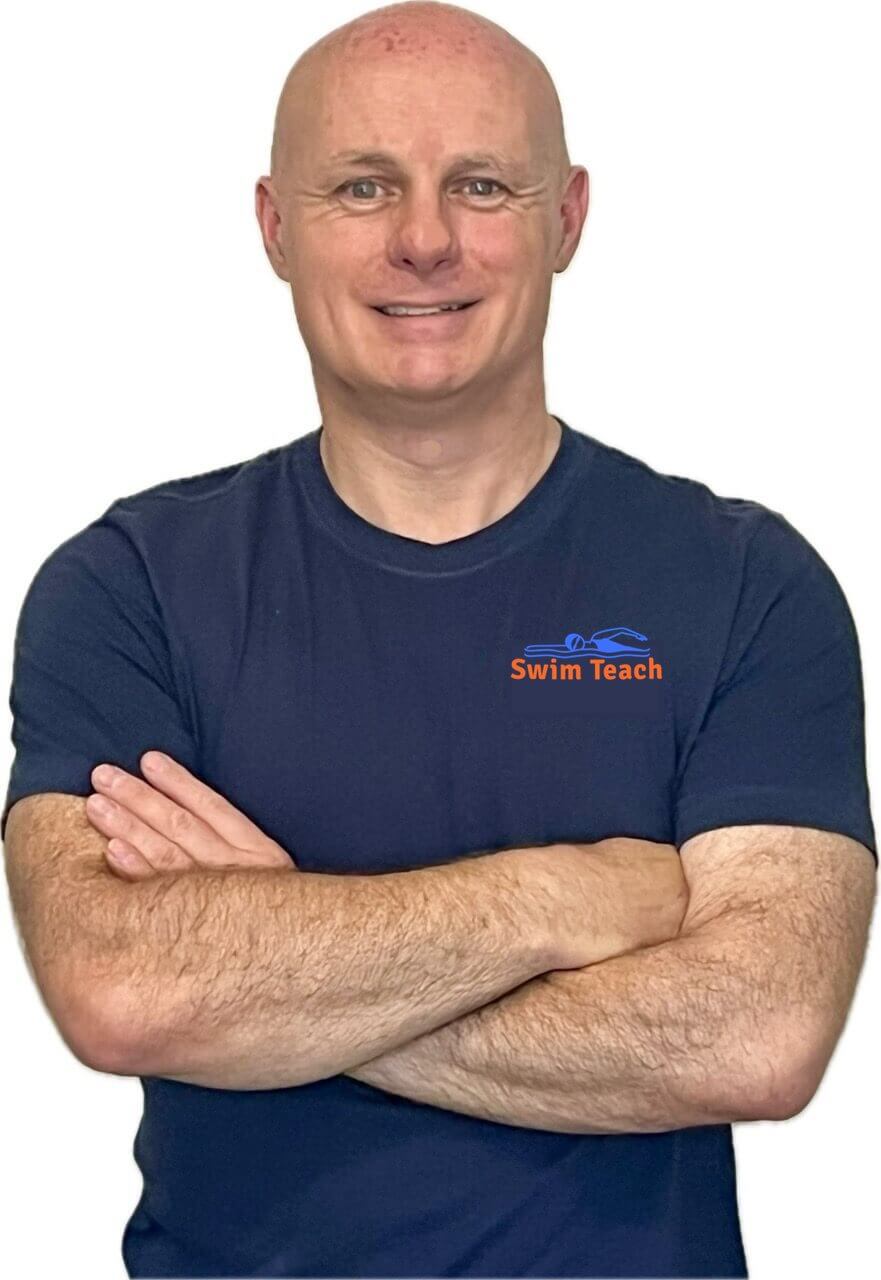- Swim Teach Home
- breaststroke swimming
- Learn Breaststroke Easily
Learn Breaststroke Easily
How can I learn breaststroke easily and which swimming stroke is best to learn first?
Breaststroke is usually the best stroke to learn first especially if you are an adult beginner to swimming. There are several reasons why breaststroke is the most adult beginner friendly.
Firstly it can be performed with the body positioned at an angle so that there is no need for the face or head to be submerged. Secondly, stopping and standing up mid-swim is easier from this stroke due to the simple arm movements.
If you are a complete beginner then it is important that you learn to hold your breath and partially submerge your face in the water. Although it is not necessary for breaststroke, it is an essential swimming basic that you need to get used to.
Some find this uncomfortable and even stressful, but if you can persevere, you will become a more comfortable and confident swimmer quicker.
It is a good idea to begin with, a swim noodle placed under your arms for support until you become confident with how your body moves through the water. It will also give you good support for practising standing up without holding onto the poolside.
My eBook ‘How To Swim Breaststroke’ contains over 20 exercises for beginners to learn the stroke. They are fully illustrated and very easy to follow. Click here for an instant preview.
Swim Too Slow
I swim too slow, but I try so hard. I can do the breaststroke, but I know my technique is not good, so I have lessons, but I now seem to be worse because it’s all so different from what I have been doing. I am so slow, and yet I put so much effort in. How long does it take for improvement? I practise three times a week. I have had five lessons. Thank you
If you have swum breaststroke for a long time, having never been taught the correct technique, you may have developed some bad habits, and those habits will be difficult to break.
The most common mistake people make with breaststroke is swimming along using the arms for propulsion, not the legs. Some people even swim without using their legs at all!
Propulsion for breaststroke must come from the whip action of the leg kick, and then the momentum from this propulsion is maintained in a glide with the arms stretched out in front.
This brings me to the second most common mistake: timing. The correct sequence for a breaststroke swimming stroke cycle is ‘pull, breathe, kick, glide’. As breaststroke is a very inefficient swimming stroke (because the arm and leg actions are very wide, causing resistance through the water), the correct sequence must be followed so that the body can continue to move through the water.
It is quite common for people to pull and kick simultaneously (as you would for front crawl and backstroke), but the nature of the arm and leg action in breaststroke is such that if they occur simultaneously, you will go nowhere!
Next time you swim, think to yourself, ‘pull THEN kick’, and if you can hold your hands and legs together for a brief glide, you will be well on your way.
The key to an easy breaststroke technique is to feel your way through the water and not fight it. Quite often, if you try to get somewhere fast, you get nowhere. Relax and approach the stroke in stages, thinking about the technique and the sequence and thinking less about how far or fast you swim. Correct technique will allow you to swim further with less effort.
My ebook How To Swim Breaststroke contains over 20 separate swimming exercises to help all parts of breaststroke, including breathing and timing. You can download it, print out the parts you need and take them to your pool to try out. Click the link below for more information.
HOW TO SWIM BREASTSTROKE EBOOK: everything you need to master breaststroke swimming stroke. 22 easy drills that focus on each part of breaststroke technique. From body position to breathing and timing. Decades of teaching experience all packaged into 1 easy file. Download to your device and master breaststroke TODAY! (click here for an INSTANT preview).
Don't miss out! Click here for more details on how to get your copy.
Swimming Relaxed Breaststroke
I have problems swimming relaxed breaststroke. In my mid-fifties, I decided to get into swimming and have occasional lessons to improve my basic and not-very-good breaststroke. I love it as I can put my head in the water as I swim for the first time. I can sense the joy of it, but I also get totally out of breath after one length and have sharp pain around my neck and on top of my shoulders afterwards. Trying to breathe in on each stroke and then out under the water, sometimes in a great rush of bubbles, sometimes controlling with short exhalations. I wear a nose clip and goggles.
What's the right way? What might I be doing wrong, and how long should I wait between swims, as it's making me sore?
I want to carry on!
Nice to hear you are enjoying your swimming, and it sounds like you are working hard and getting a lot out of it.
The breathing technique for breaststroke occurs every stroke and should be an inhalation above the water and an exhalation below or across the water's surface. This technique is pretty much what you have described, so it sounds all correct in the breathing department.
So why do you get out of breath so quickly? First and foremost, swimming is a form of aerobic exercise, and your body is working out, so a fitness level is required. Your stamina and overall fitness will improve the more you swim. Ok, that’s the obvious part out of the way.
There are a couple of adjustments to your stroke to make it easier and more comfortable. Firstly glide for longer. In other words, keep your hands together out in front of you for a second or two before your next arm pull.
If your breaststroke follows the correct timing sequence of pull, breathe, kick, and glide, you should be able to extend your glide period for longer. The result will be a longer distance covered per stroke, which will result in swimming a length using fewer strokes and, therefore, less effort.
A longer glide will also give you more time to exhale, making breathing more comfortable. Unfortunately, you will have to get used to the rush of bubbles. The more you do it, the easier it will become. Goggles and a nose clip are helpful but not essential.
The pain you feel in your neck and shoulders is caused by your body position and head position. Your head is probably looking forward most of the time, even when your face is submerged. The muscles in your neck have to work hard to keep your head in that position. You can make life easier for them by looking down when you breathe so that your head and neck return to their normal position.
Once again, fitness plays a part, which is why you are sore, and your muscles ache. They will become fitter the more you swim, and swimming every other day is perfectly acceptable at this stage.
My eBook How To Swim Breaststroke contains over 20 separate exercises covering all aspects of the swimming stroke, including breathing, body position and timing. You can download it instantly, print out the exercises you want and take them to your pool to try out. Each exercise is clear and easy to follow, with diagrams and focus points. Click the link below for more information, or click here for an instant preview.
The Simple Breaststroke Ebook
I am a member of the Amazon Associates Program and I will earn a commission from qualifying purchases at no extra cost to you.




